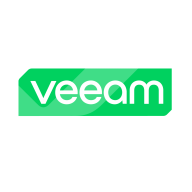

Quest Foglight for Virtualization and Veeam Data Platform compete in the virtualization and data management sectors. Veeam Data Platform appears superior with its advanced features, offering significant value for the cost.
Features: Quest Foglight provides performance monitoring, diagnostics, and insights into resource usage and optimization. Veeam Data Platform offers data protection with backup, recovery, and replication, delivering a comprehensive approach. Quest focuses on virtualization management, while Veeam extends with robust data protection.
Ease of Deployment and Customer Service: Quest Foglight ensures a streamlined implementation with attentive customer service for smooth transitions. Veeam Data Platform handles a more complex deployment requiring more time, supported by reliable assistance. Quest's straightforward integration fits those seeking quick deployment, whereas Veeam's capabilities necessitate elaborate setup with comprehensive support.
Pricing and ROI: Quest Foglight provides cost-effective solutions promising good ROI for virtual performance management. Veeam Data Platform, with higher initial setup costs, justifies its pricing through superior data management, making it worthwhile for extensive data protection. Quest focuses on affordability, while Veeam's functionalities contribute to significant ROI over time.


Veeam Data Platform ensures comprehensive data resilience by offering secure backups and intelligent data insights, catering to the complexities of modern data management.
Veeam Data Platform empowers businesses with reliable data protection, orchestrated recovery, and streamlined management. Providing peace of mind, it guarantees data is secure, available, and effortlessly recoverable. Organizations benefit from features such as instant recovery, simplified management, and compatibility with virtual environments. While it shines in backup and restore capabilities, it calls for improvements in integration with physical servers and enhanced cyber security features.
What are the key features of Veeam Data Platform?Organizations in industries like finance, healthcare, and manufacturing utilize Veeam Data Platform for critical data management, ensuring business continuity and disaster recovery. Employed in securing both virtual and physical workloads, Veeam integrates cloud storage for enhanced scalability and efficiency.
We monitor all Virtualization Management Tools reviews to prevent fraudulent reviews and keep review quality high. We do not post reviews by company employees or direct competitors. We validate each review for authenticity via cross-reference with LinkedIn, and personal follow-up with the reviewer when necessary.